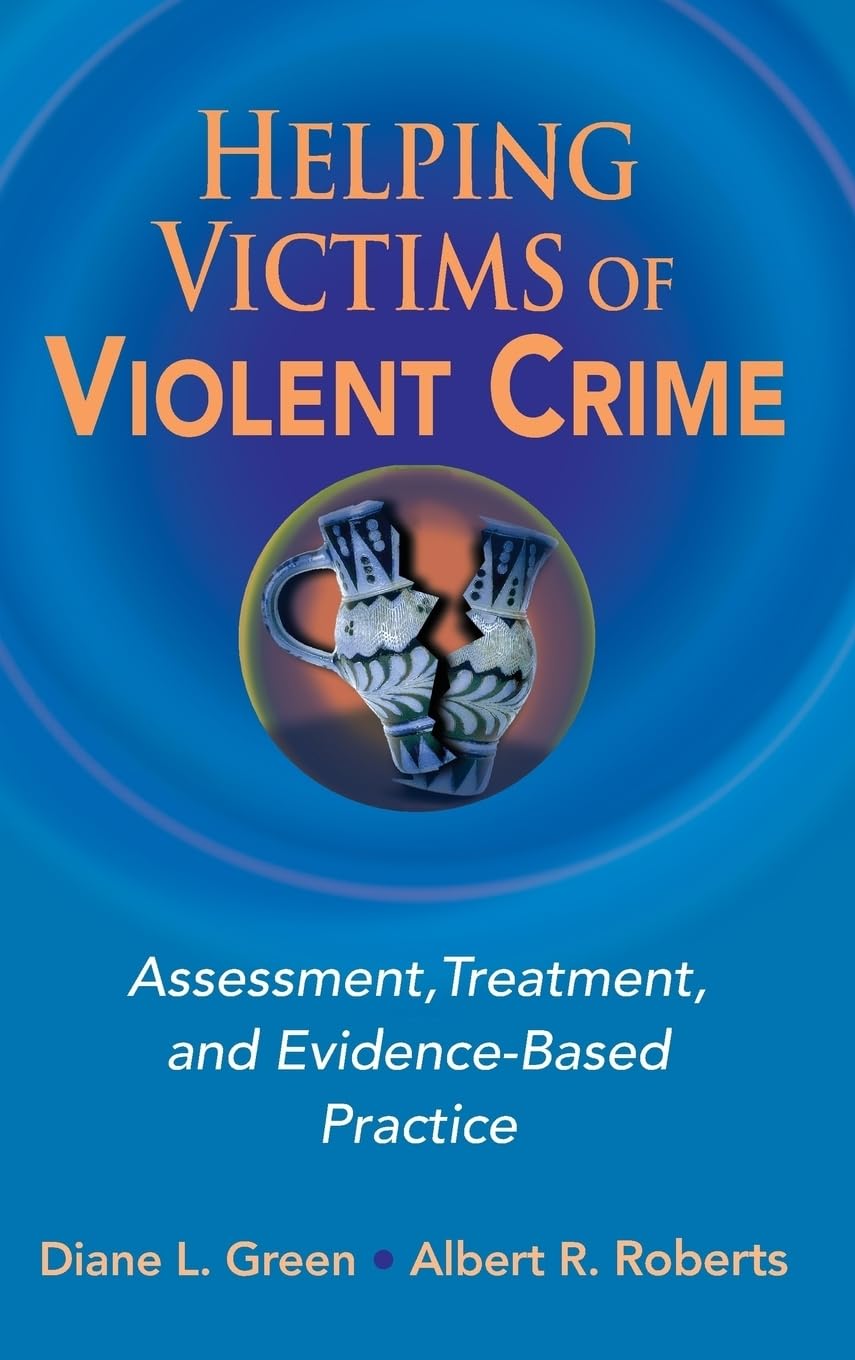
Title

Helping Victims Of Violent Crime: Assessment, Treatment, And Evidencebased Practice (Springer Series On Social Work)
Processing time: 1-3 days
US Orders Ships in: 3-5 days
International Orders Ships in: 8-12 days
Return Policy: 15-days return on defective items
Over The Past Two Decades, Violent Crime Has Become One Of The Most Serious Domestic Problems In The United States. Approximately 13 Million People (Nearly 5% Of The U.S. Population) Are Victims Of Crime Every Year, And Of That, Approximately One And A Half Million Are Victims Of Violent Crime. Ensuring Quality Of Life For Victims Of Crime Is Therefore A Major Challenge Facing Policy Makers And Mental Health Providers.Helping Victims Of Violent Crime Grounds Victim Assistance Treatments In A Victimcentered And Strengths Perspective. The Book Explores Victim Assistance Through Systems Theory: The Holistic Notion Of Examining The Client In His/Her Environment And A Key Theoretical Underpinning Of Social Work Practice.The Basic Assumption Of Systems Theoryis Homeostasis. A Crime Event Causes A Change In Homeostasis And Often Results In Disequilibrium. The Victim'S Focus At This Point Is To Regain Equilibrium. Under The Systems Metatheory, Coping, Crisis And Attribution Theories Provide A Good Framework For Victimcentered Intervention. Stress And Coping Theories Posit That Three Factors Determine The State Of Balance: Perception Of The Event, Available Situational Support, And Coping Mechanisms.Crisis Theory Offers A Framework To Understand A Victim'S Response To A Crime. The Basic Assumption Of Crisis Theory Asserts That When A Crisis Occurs, People Respond With A Fairly Predictable Physical And Emotional Pattern. The Intensity And Manifestation Of This Pattern May Vary From Individual To Individual. Finally, Attribution Theory Asserts That Individuals Make Cognitive Appraisals Of A Stressful Situation In Both Positive And Negative Ways. These Appraisals Are Based On The Individual'S Assertion That They Can Understand, Predict, And Control Circumstances And Result In The Victim'S Assignment Of Responsibility For Solving Or Helping With Problems That Have Arisen From The Crime Event.In Summary, These Four Theories Can Delineate A Definitive Model For Approach To The Victimization Process. It Is From This Theoretical Framework That Treating Victims Of Violent Crime Offers Assessments And Interventions With A Fuller Understanding Of The Victimization Recovery Process. The Book Includes Analysis Of Victims Of Family Violence (Child Abuse, Elder Abuse, Partner Violence) As Well As Stranger Violence (Sexual Assault, Homicide, And Terrorism).
⚠️ WARNING (California Proposition 65):
This product may contain chemicals known to the State of California to cause cancer, birth defects, or other reproductive harm.
For more information, please visit www.P65Warnings.ca.gov.
- Q: What is the main focus of 'Helping Victims of Violent Crime'? A: The book focuses on victim assistance treatments grounded in a victim-centered and strengths perspective, exploring various theories related to the victimization process.
- Q: How many pages does the book contain? A: The book contains 280 pages.
- Q: Who is the author of this book? A: The author of the book is Diane L. Green, PhD.
- Q: What edition of the book is available? A: The book is available in its First Edition.
- Q: When was 'Helping Victims of Violent Crime' published? A: The book was published on June 23, 2008.
- Q: What type of binding does this book have? A: This book is bound in hardcover.
- Q: What topics does the book cover? A: The book covers topics including family violence, child abuse, elder abuse, partner violence, stranger violence, sexual assault, homicide, and terrorism.
- Q: Is the book suitable for mental health professionals? A: Yes, the book is designed for policy makers, mental health providers, and those interested in victim assistance treatments.
- Q: What theoretical frameworks are discussed in the book? A: The book discusses systems theory, crisis theory, coping theory, and attribution theory in relation to victimization.
- Q: What condition is the item listed in? A: The item is listed in Good condition.

